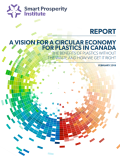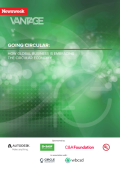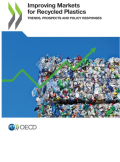This paper Global Resources Outlook 2019 presents the story of natural resources as they move through our economies and societies. It is a story of relentless demand and of unsustainable patterns of industrialization and development.

A plastics circular economy in Canada would recirculate materials in an environmentally- and financially-sustainable closed loop. It reduces waste and emissions while capturing value.

E-waste is now the fastest-growing waste stream in the world, and society only deals with 20% of e-waste appropriately, yet e-waste is worth at least $62.5 billion annually. This paper discusses the state of play regarding global e-waste handling and production, and the potential benefits of the proper treatment of e-waste, including resource recovery from urban mining, reverse logistics and advanced recycling and recapturing.

This research confirms that the concept of a circular economy has gone from relative obscurity to the corporate boardroom in just a few years. It identifies five strategies and business models that companies are adopting to make their products, processes or business models more circular, and spotlights eight actions companies can take to accelerate their circular transition as well as circular drivers, including climate change, national regulations and policy, and consumer awareness and activism.

Plastics have become one of the most prolific materials on the planet: in 2015 we produced about 380 million tonnes of plastics globally, up from 2 million tonnes in the 1950s. Yet today only 15% of this plastic waste is collected and recycled into secondary plastics globally each year. This report looks at why this is the case and what we can do about it, as the pervasiveness of plastics is becoming an urgent public health and planetary problem.
